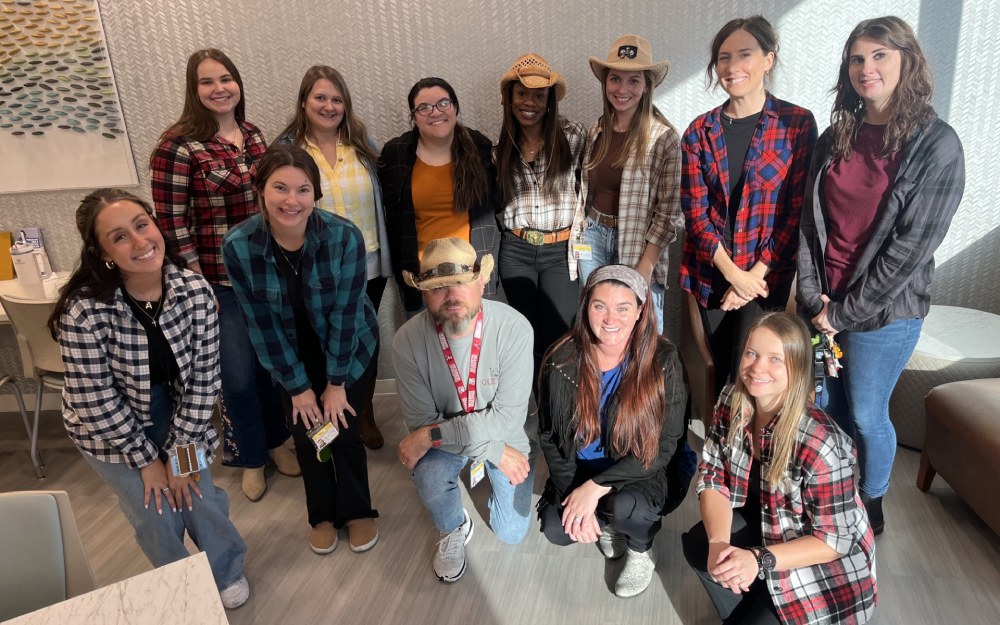
Residential care at Rogers reintegrates outings and visitations
04/16/21 04:18:pmWith loosening restrictions and improving weather, residential care units at Rogers Behavioral Health are now able to increase visitors and outings.
For many residents, particularly those in adolescent care, not being able to see and speak with their families can make them feel lonely. Eddie Tomaich, PhD, director of residential services in Oconomowoc, says that before the pandemic they would try to get families in for a visit about one to two times per month, with visits typically increasing as residents approached discharge. But until recently, visits weren’t able to take place.
Since early spring, a large tent with individual rooms have been set up on the Oconomowoc campus, which helps make family visits easier and safer to host.
“They all add therapeutic value,” Dr. Tomaich says. “We’re working with reintegrating them back home. Sometimes they’ll practice exposures with them, or we’ll build family skills like backing off on accommodation.”
Prior to the tent, every visit had to be done virtually to ensure a safe environment for patients, families, and care teams.
“It’s not the same as being in person,” Dr. Tomaich says. “And on that end, we’re seeing that it’s very motivating for families and residents, especially with the younger kids.”
Bringing in family has been especially important for patients with OCD who believe a family member is contaminated or have fears around driving in a car with their parents.
“We’ve had to be really creative about doing exposures like sending in articles of clothing that belong to a family member,” Dr. Tomaich says. “Now being able to have them be in the same spot—it 100% adds to their progress in treatment.”
Public outings
Programs that deal a lot with exposure and response prevention have also seen benefits from increased publics – or trips for practicing behavioral activation or ERP in public spaces. These can be a mix of therapy and field trips, with destinations including places like Goodwill, Brookfield Square, Soul Fire Art Studio, and Humane Animal Welfare Society of Waukesha County.
Five patients who went to Target, for example, might have five completely different exposures they could practice. One could ask a stranger a question; another might have to touch an item they know other people have touched.

“Doing exposures in the hospital setting works,” Jenifer Waite-Wollenburg, manager, residential operations, says. “But when you’re actually in the community it feels more real and challenging. Making a ‘mess’ in a public space is different than making a mess in a private, safe hospital setting or you have more anxiety over asking a stranger a question versus a staff member. Practicing in public is important because we’re preparing them for being able to do these things after they discharge.”
Not only has this helped from a patient morale standpoint, but Jenifer says it’s been a boost for care teams as well.
“Staff are feeling it was one of the most essential things to bring back,” she says. “In residential care we’re providing a home-like environment, and we’re supposed to help that transition back into the community. When you can’t leave to get out, you really can’t get people into the spaces and paired up with the opportunities that they need to work on their skillsets and establish some sense of success and mastery before discharge.”
In-person family meals
Family meals are an important component of eating disorder treatment but trying to set up an in-person meal can be difficult, as families and patients still need to remain masked for their visits.
Thanks to some ingenuity, the Eating Disorder Recovery adolescent team has been able to host family meals since before Thanksgiving. Jenifer says that Ginger Livingston, one of their therapists, came up with the idea of using the conservatory that’s attached to the unit.
The conservatory is essentially a climate-controlled mini greenhouse about the size of an elevator, which is attached to the main building by the teaching kitchen. With families seated in the conservatory and residents on the other side of a glass door, they can have meals together and communicate with each other using walkie-talkies or Chromebooks.
“There is a critical need for these family meals because it’s something they’ll need in order to be prepared to go home. When the conservatory was first built, we never imagined it being used like this, but it offered us a unique opportunity.”





